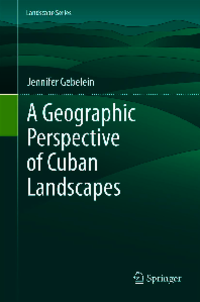Categoría "Geografia"
Se han encontrado 1 Coincidencias
A Geographic Perspective of Cuban Landscapes
57 Visitas | 55 Descargas | 2017-02-14 07:04:01 | raulito
This book was inspired by my travels and fi eldwork in Cuba over the past 8 years. The fi rst time in 2003, I was invited to speak at a conference in Havana sponsored, in part by the University of Havana and its Geography Department. From the moment I landed until the time I left, I was overwhelmed by the generosity of the people, the impressive knowledge presented by scientists about the myriad of ecosystems in Cuba, and the beauty of the island. And as I returned to Miami from that fi rst trip, I was struck that while Cuba seems so far away in our typical American mindset due to politics; it is so close in terms of geographic distance, that it seemed a travesty to not become involved in scientifi c research on the island. On subsequent trips my fi rst impressions were only strengthened as I explored the island with my student. Upon traveling across the island to many different preserves, conservation areas and World Heritage Sites, it became clear that the management of Cuba’s natural resources was a complicated and monumental task. I wanted to better understand how the Cubans administered these very different areas with distinctive conservation strategies. However I found that this administrative framework was exceptionally complicated and my only hope for grasping the full implications of current laws and policies was to go back in time and appreciate the many stages of landscape evolution that Cuba has undergone. This was the impetus for this book. This book is the culmination of research that gives the reader a nonfi ction view of how Cuba’s landscape has changed since the time when Columbus fi rst set foot on the island and encountered the Indigenous peoples who lived there in 1492 to present day. I touch on several topics that are relevant to analysis of landscape change over time to help the reader understand the full complexity of Cuba’s physical transformation. That transformation from a heavily forested island to less than (currently) 18% forest cover is quite drastic and during more recent decades the government has established a system of protected areas and strong governmental controls over environmental policies and the manner with which the island can be built upon by foreign investors, urban expansion projects, or natural resource exploitation.
Contribuir
Usted puede contribuir con Libros UCLV, es importante para nosotros su aporte..
Contribuir